 Conversations in a Quantum Café: A Curious Journey Through Quantum Computing for Everyone
Conversations in a Quantum Café: A Curious Journey Through Quantum Computing for Everyone
Published in , 2025
This book is a work in progress.
 Conversations in a Quantum Café: A Curious Journey Through Quantum Computing for Everyone
Conversations in a Quantum Café: A Curious Journey Through Quantum Computing for Everyone Published in , 2025
This book is a work in progress.
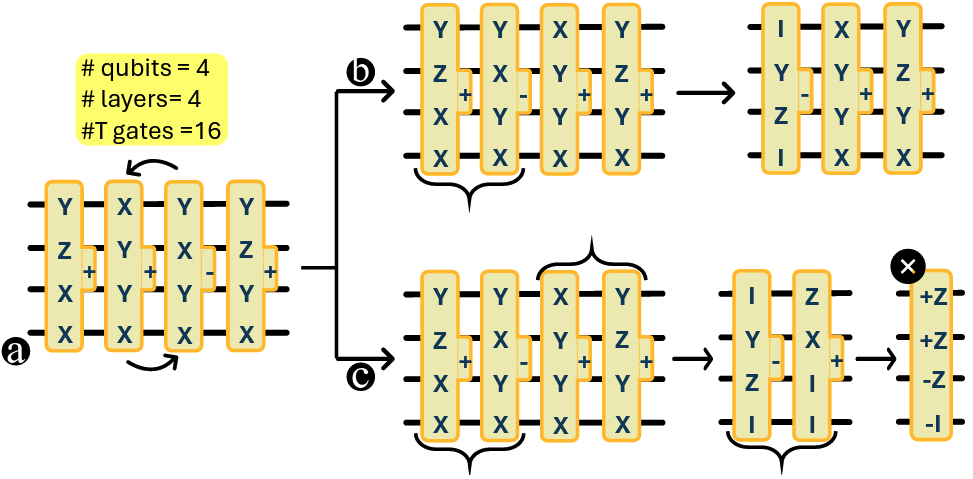 Survival of the Optimized: An Evolutionary Approach to T-depth Reduction
Survival of the Optimized: An Evolutionary Approach to T-depth Reduction Published in arXiv Preprint, 2025
Quantum circuits must be compiled into the Clifford+T gate set, where the non-transversal nature of the T-gates necessitates costly magic distillation. As circuit complexity grows, so does the T-depth: the sequential T-gate layers, due to the decomposition of arbitrary rotations, further increasing the QEC demands. Optimizing T-depth poses two key challenges: it is NP-hard and existing solutions like greedy or brute-force algorithms are either suboptimal or computationally expensive. We address this by framing the problem as a search task and propose a Genetic Algorithm (GA)-based approach to discover near-optimal T-gate merge patterns across circuit layers. To improve upon convergence and solution quality, we incorporate a mathematical expansion scheme that facilitates reordering layers to identify better merge opportunities, along with a greedy initialization strategy based on T-gate density.
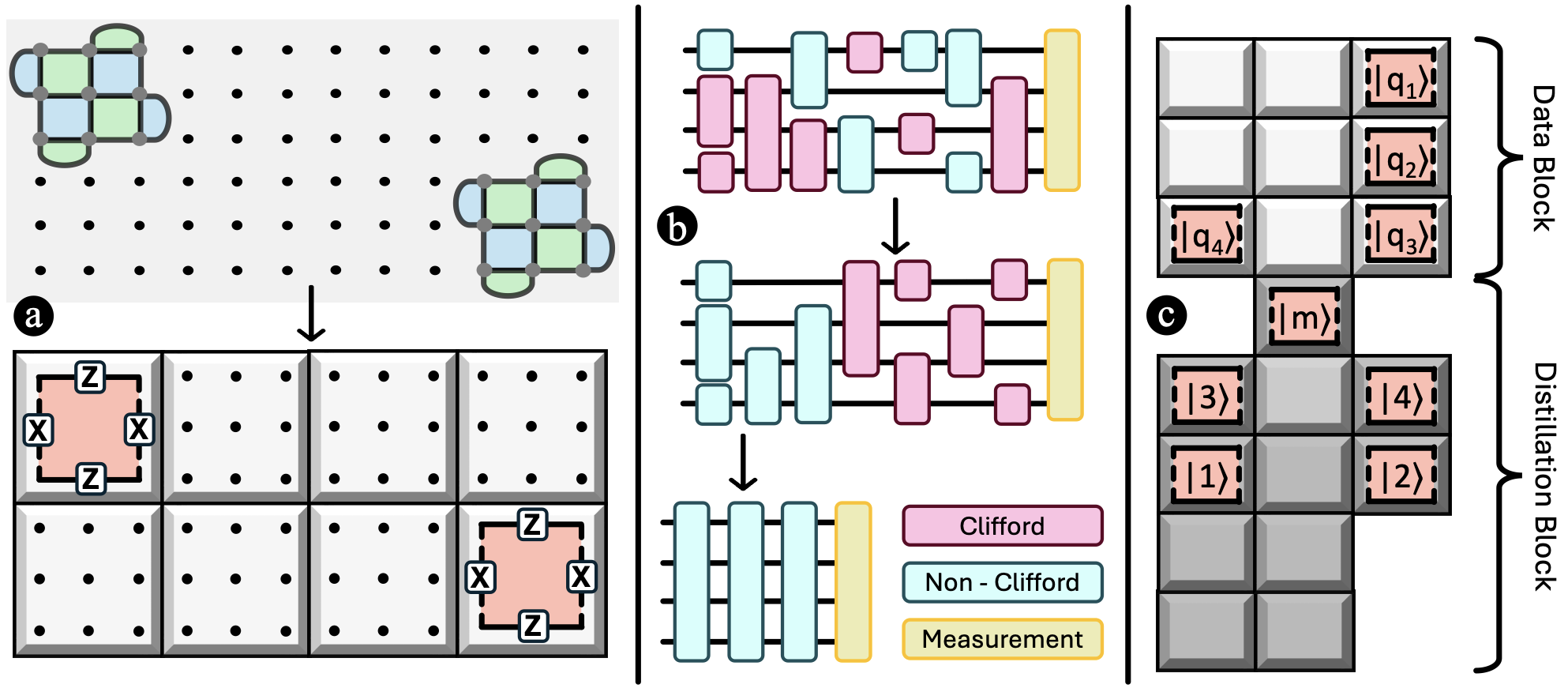 The Q-Spellbook: Crafting Surface Code Layouts and Magic State Protocols for Large-Scale Quantum Computing
The Q-Spellbook: Crafting Surface Code Layouts and Magic State Protocols for Large-Scale Quantum Computing Published in arXiv Preprint, 2025
Surface codes are efficient for Clifford gates but require magic state distillation protocols to process non-Clifford gates, such as T gates, essential for universal quantum computation. In large-scale quantum architectures capable of correcting arbitrary circuits, specialized surface codes for data qubits and distinct codes for magic state distillation are needed. These architectures can be organized into data blocks and distillation blocks. The system works by having distillation blocks produce magic states and data blocks consume them, causing stalls due to either a shortage or excess of magic states. This bottleneck presents an opportunity to optimize quantum space by balancing data and distillation blocks. While prior research offers insights into selecting distillation protocols and estimating qubit requirements, it lacks a tailored optimization approach. We present a framework for optimizing large-scale quantum architectures, focusing on data block layouts and magic state distillation protocols. We evaluate three data block layouts and four distillation protocols under three optimization strategies: minimizing tiles, minimizing steps, and achieving a balanced trade-off.
 The Art of Optimizing T-Depth for Quantum Error Correction in Large-Scale Quantum Computing
The Art of Optimizing T-Depth for Quantum Error Correction in Large-Scale Quantum Computing Published in arXiv Preprint, 2025
To apply QEC, a circuit must first be transformed into a non-Clifford (or T) gate set. T-depth, the number of sequential T-gate layers, determines the magic state cost, impacting both spatial and temporal overhead. Minimizing T-depth is crucial for optimizing resource efficiency in fault-tolerant quantum computing. While QEC scalability has been widely studied, T-depth reduction remains an overlooked challenge. We establish that T-depth reduction is an NP-hard problem and systematically evaluate multiple approximation techniques: greedy, divide-and-conquer, Lookahead-based brute force, and graph-based.
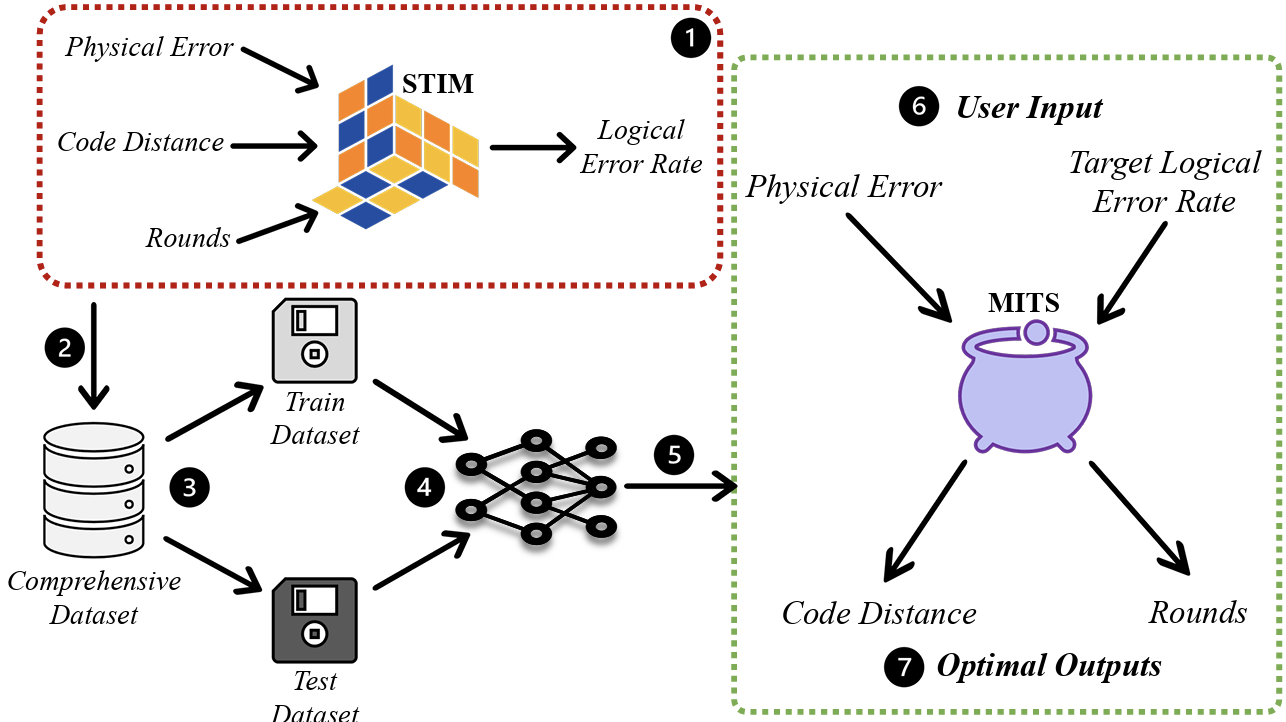 MITS: A Quantum Sorcerer Stone For Designing Surface Codes
MITS: A Quantum Sorcerer Stone For Designing Surface Codes Published in Entropy 2025, 27(8), 812, 2025
Traditionally, simulators operate in a forward paradigm, taking parameters such as distance, rounds, and physical error to output a logical error rate. However, usage of maximum distance and rounds of the surface code might waste resources. An approach that relies on trial and error to fine-tune QEC code parameters using simulation tools like STIM can be exceedingly time-consuming. Additionally, daily fluctuations in quantum error rates can alter the ideal QEC settings needed. As a result, there is a crucial need for an automated solution that can rapidly determine the appropriate QEC parameters tailored to the current conditions. To bridge this gap, we present MITS, a tool designed to reverse-engineer the well-known simulator STIM for designing QEC codes. MITS accepts the specific noise model of a quantum computer and a target logical error rate as input and outputs the optimal surface code rounds and code distances.
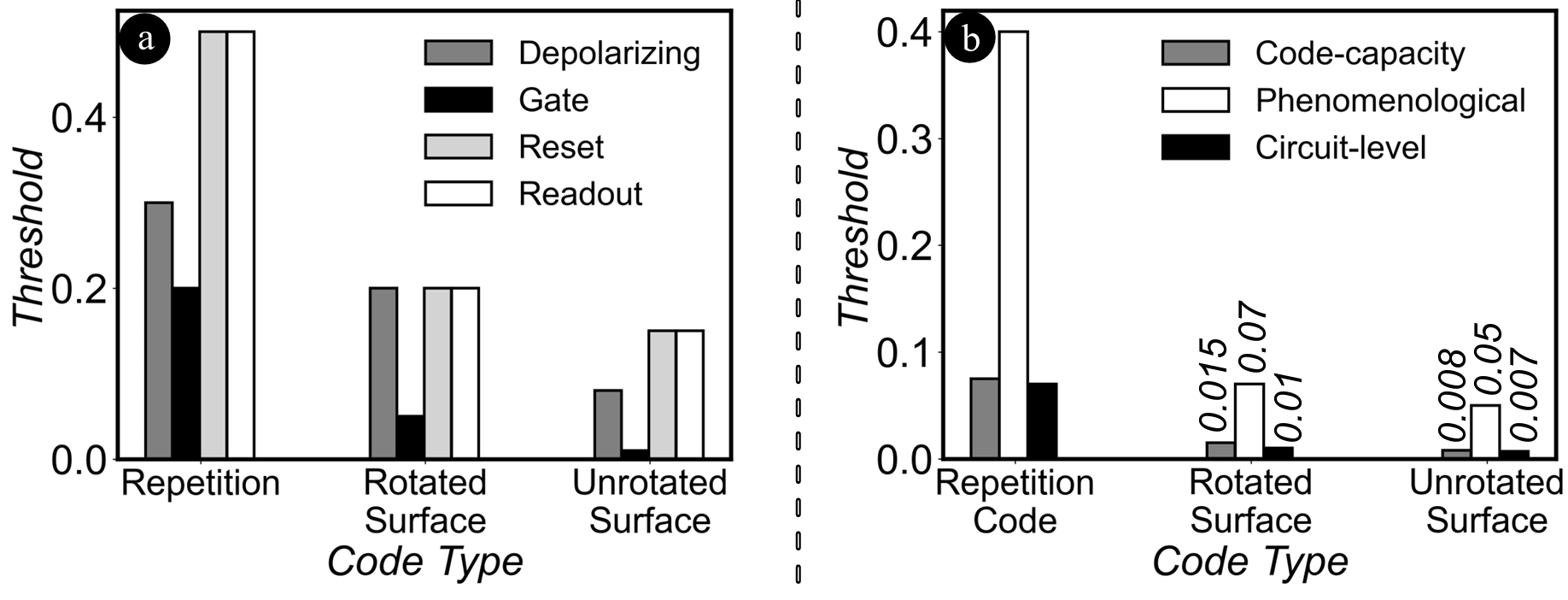 Q-Pandora Unboxed: Characterizing Resilience of Quantum Error Correction Codes Under Biased Noise
Q-Pandora Unboxed: Characterizing Resilience of Quantum Error Correction Codes Under Biased Noise Published in Applied Sciences 2025, 15(8), 4555, 2025
We examine how different noise types impact QECCs, considering the varying susceptibility of quantum systems to specific errors. Our goal is to identify opportunities to minimize the resources—or overhead—needed for effective error correction. We conduct a detailed study on two QECCs—rotated and unrotated surface codes—under various noise models using simulations
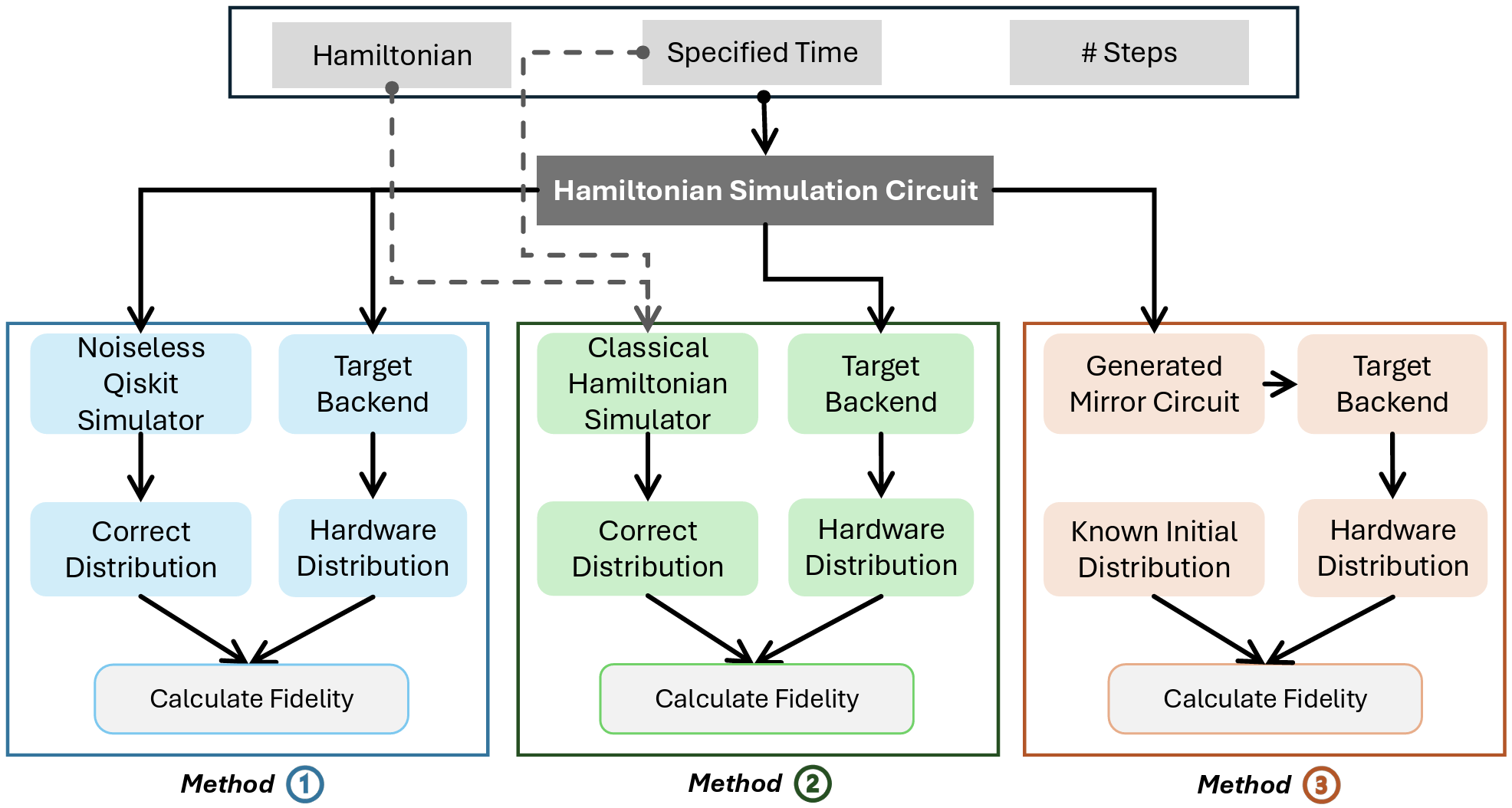 A comprehensive cross-model framework for benchmarking the performance of quantum hamiltonian simulations
A comprehensive cross-model framework for benchmarking the performance of quantum hamiltonian simulations Published in IEEE Transactions on Quantum Engineering (Volume: 6), 2025
Quantum Hamiltonian simulation is one of the most promising applications of quantum computing and forms the basis for many quantum algorithms. Benchmarking them is an important gauge of progress in quantum computing technology. We present a methodology and software framework to evaluate various facets of the performance of gate-based quantum computers on Trotterized quantum Hamiltonian evolution.
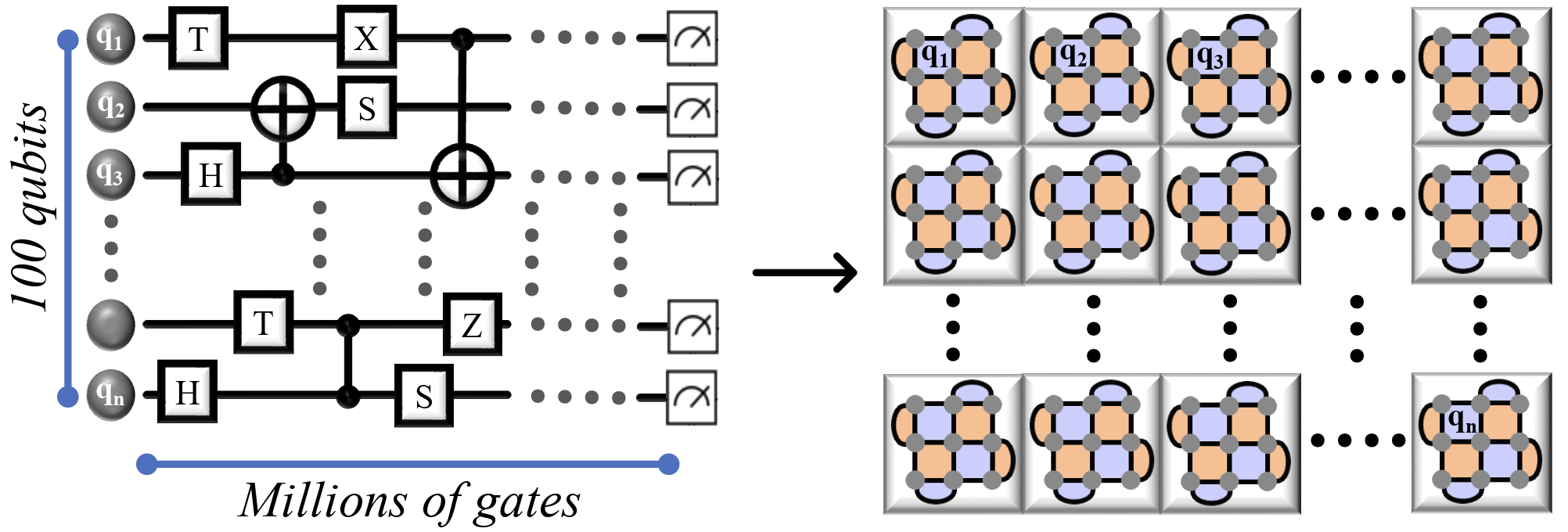 Lattice Surgery for Dummies
Lattice Surgery for Dummies Published in Sensors 2025, 25(6), 1854, 2025
Lattice surgery is crucial for enabling interactions among multiple encoded qubits or between the lattices of a surface code, ensuring that its sophisticated error-correcting features are maintained without significantly increasing the operational overhead. Lattice surgery is pivotal for scaling QECCs across more extensive quantum systems. Despite its critical importance, comprehending lattice surgery is challenging due to its inherent complexity, demanding a deep understanding of intricate quantum physics and mathematical concepts. This paper endeavors to demystify lattice surgery, making it accessible to those without a profound background in quantum physics or mathematics.
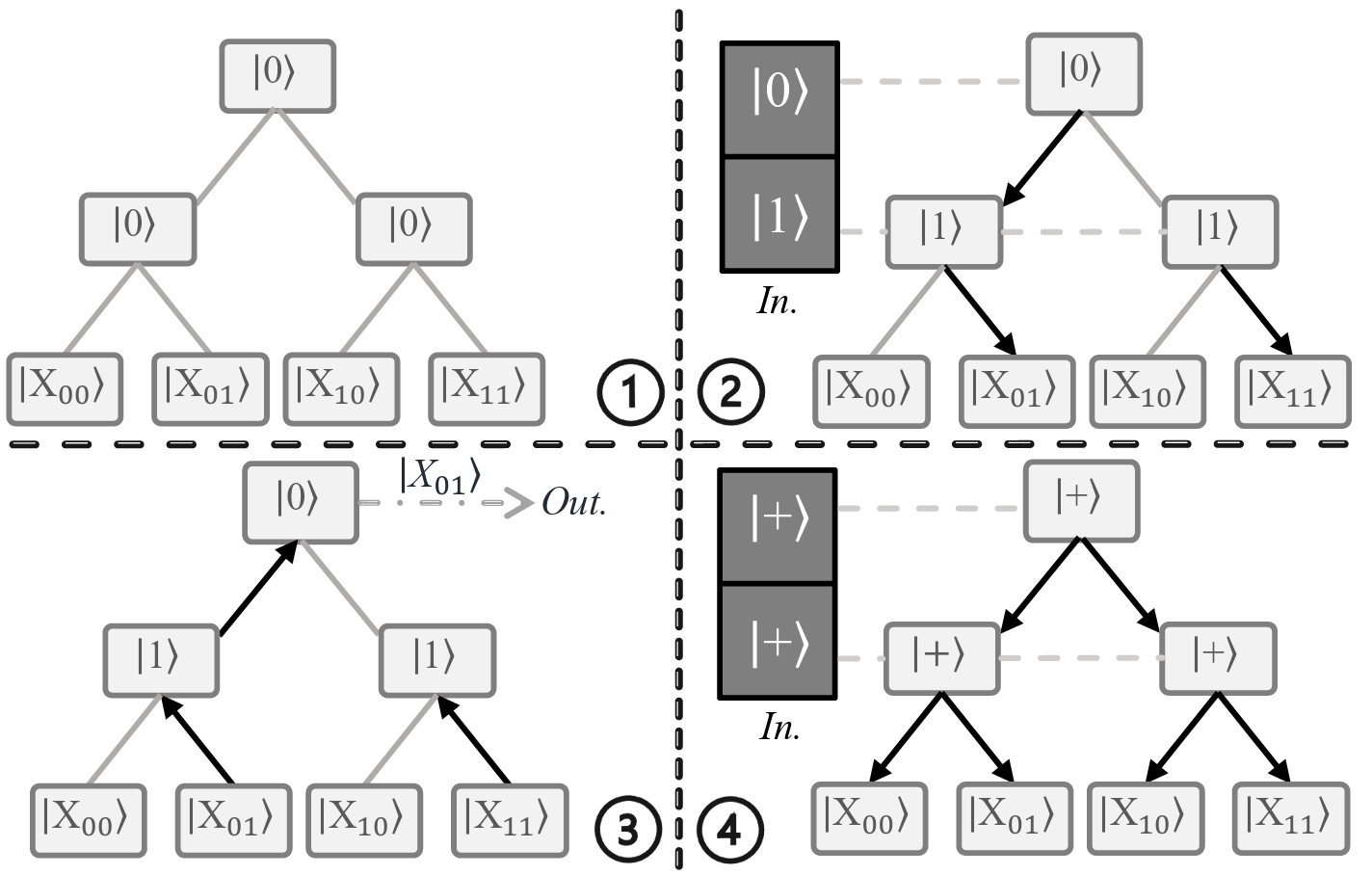 Quantum Random Access Memory for Dummies
Quantum Random Access Memory for Dummies Published in Sensors 2023, 23(17), 7462, 2023
Quantum Random Access Memory (QRAM) has the potential to revolutionize the area of quantum computing. QRAM uses quantum computing principles to store and modify quantum or classical data efficiently, greatly accelerating a wide range of computer processes. Despite its importance, there is a lack of comprehensive surveys that cover the entire spectrum of QRAM architectures. We fill this gap by providing a comprehensive review of QRAM, emphasizing its significance and viability in existing noisy quantum computers
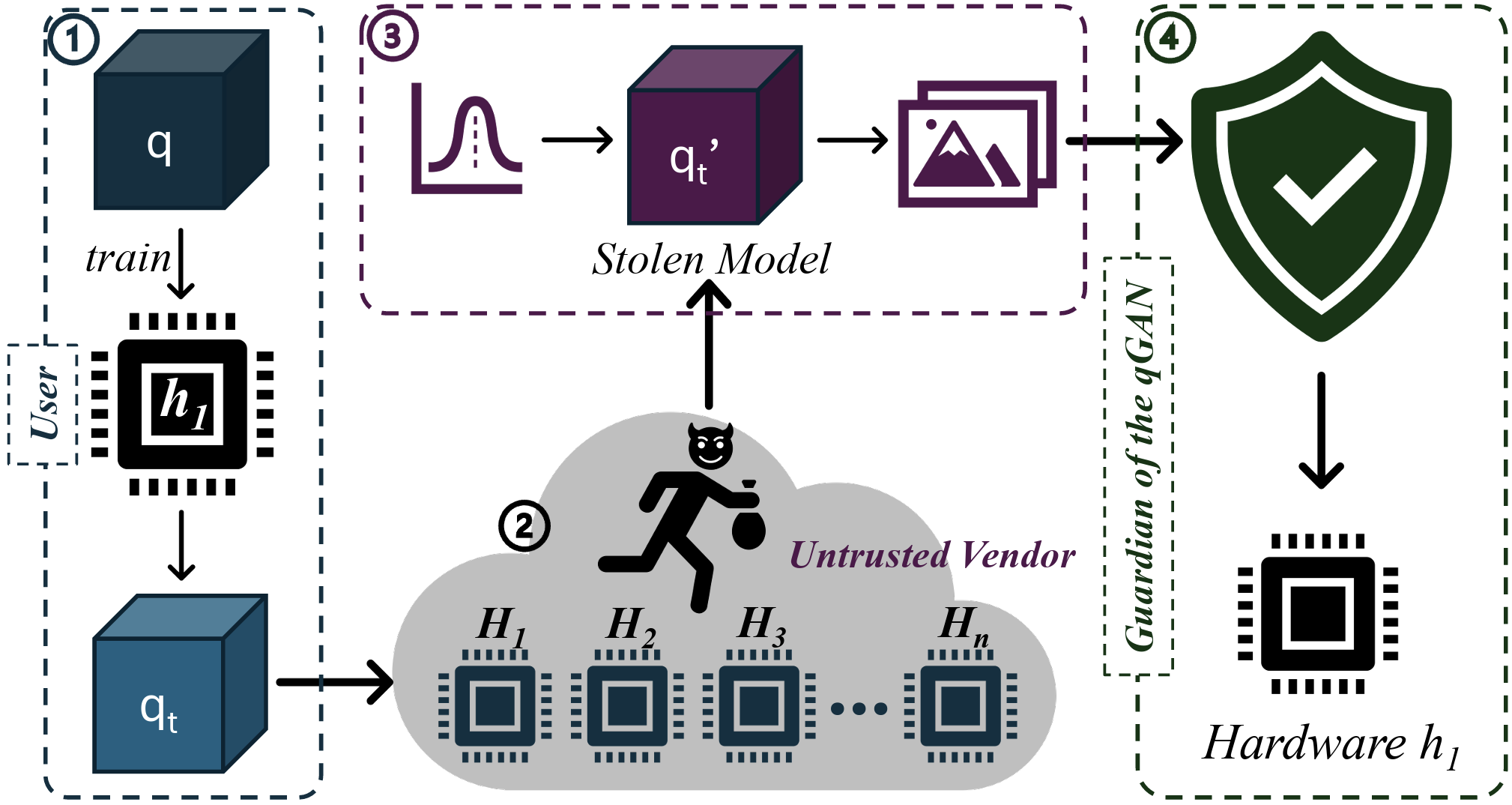 Guardians of the Quantum GAN
Guardians of the Quantum GAN Published in 2025 26th International Symposium on Quality Electronic Design (ISQED), 2025
Quantum Generative Adversarial Networks (qGANs) are at the forefront of image-generating quantum machine learning models. To accommodate the growing demand for Noisy Intermediate-Scale Quantum (NISQ) devices to train and infer quantum machine learning models, the number of third-party vendors offering quantum hardware as a service is expected to rise. This expansion introduces the risk of untrusted vendors potentially stealing proprietary information from the quantum machine learning models. To address this concern we propose a novel watermarking technique that exploits the noise signature embedded during the training phase of qGANs as a non-invasive watermark. The watermark is identifiable in the images generated by the qGAN allowing us to trace the specific quantum hardware used during training hence providing strong proof of ownership. To further enhance the security robustness, we propose the training of qGANs on a sequence of multiple quantum hardware, embedding a complex watermark comprising the noise signatures of all the training hardware that is difficult for adversaries to replicate.
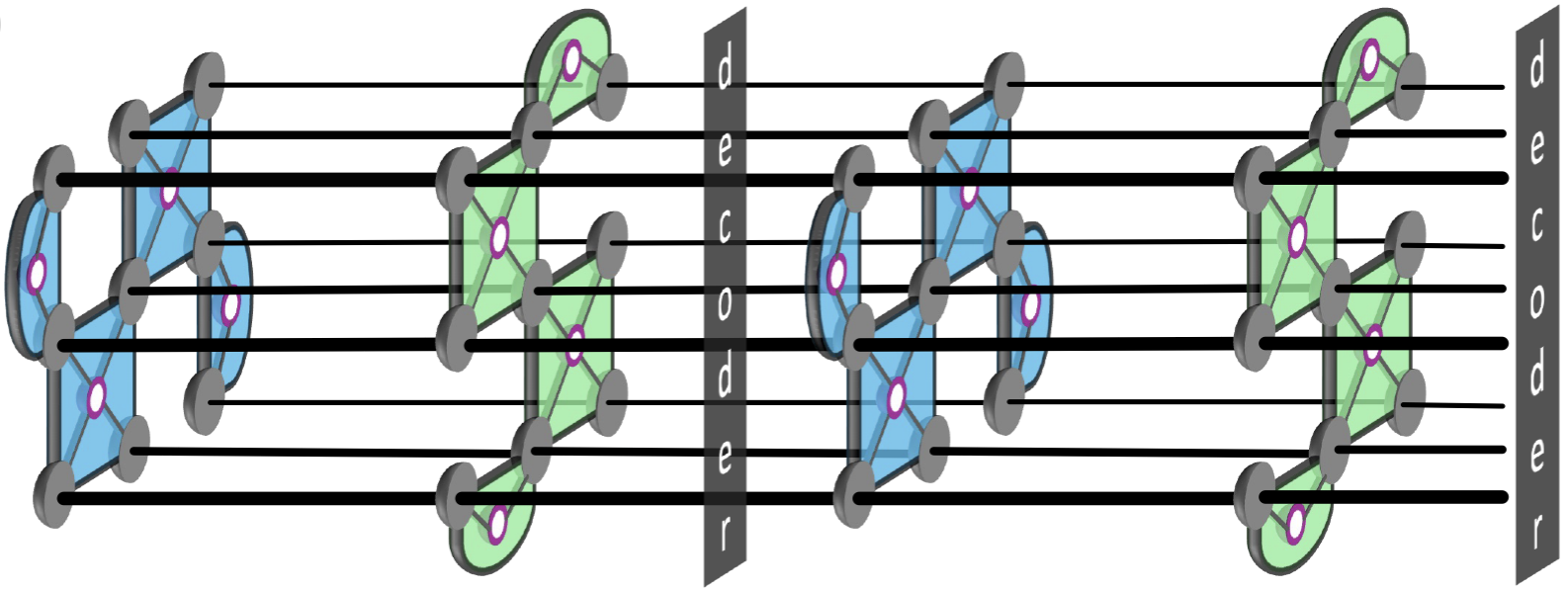 Quantum Prometheus: Defying Overhead with Recycled Ancillas in Quantum Error Correction
Quantum Prometheus: Defying Overhead with Recycled Ancillas in Quantum Error Correction Published in 2025 26th International Symposium on Quality Electronic Design (ISQED), 2025
One of the major challenges in quantum computing is reducing this overhead, especially since QEC codes depend heavily on ancilla qubits for stabilizer measurements. In this work, we propose reducing the number of ancilla qubits by reusing the same ancilla qubits for both X- and Z-type stabilizers. This is achieved by alternating between X and Z stabilizer measurements during each half-round, cutting the number of required ancilla qubits in half.
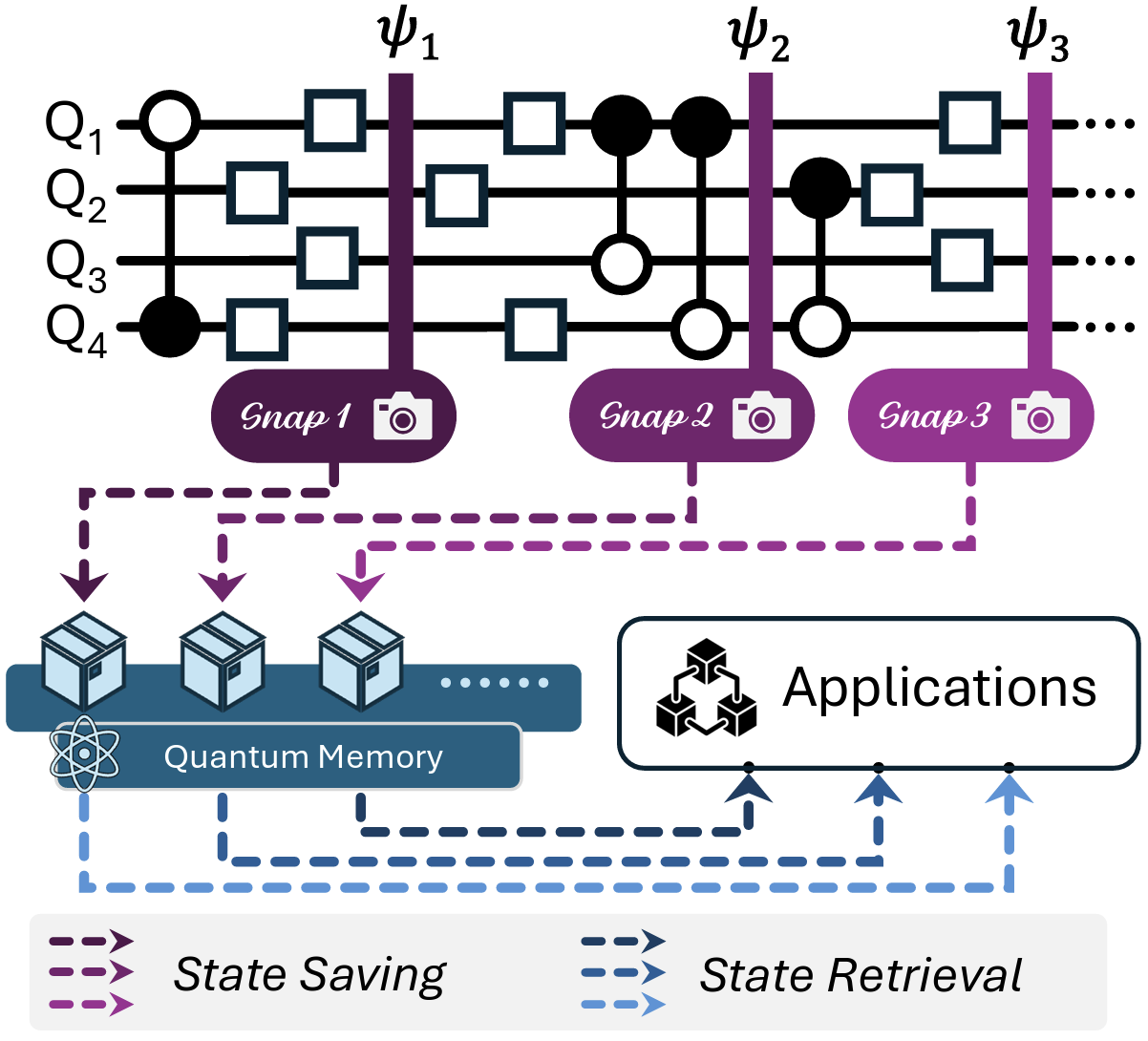 Capturing Quantum Snapshots from a Single Copy via Mid-Circuit Measurement and Dynamic Circuit
Capturing Quantum Snapshots from a Single Copy via Mid-Circuit Measurement and Dynamic Circuit Published in arXiv Preprint, 2025
We propose Quantum Snapshot with Dynamic Circuit (QSDC), a hardware-agnostic, learning-driven framework for capturing quantum snapshots: non-destructive estimates of quantum states at arbitrary points within a quantum circuit, which can then be classically stored and later reconstructed. This functionality is vital for introspection, debugging, and memory in quantum systems, yet remains fundamentally constrained by the no-cloning theorem and the destructive nature of measurement. QSDC introduces a guess-and-check methodology in which a classical model, powered by either gradient-based neural networks or gradient-free evolutionary strategie, is trained to reconstruct an unknown quantum state using fidelity from the SWAP test as the sole feedback signal. Our approach supports single-copy, mid-circuit state reconstruction, assuming hardware with dynamic circuit support and sufficient coherence time.
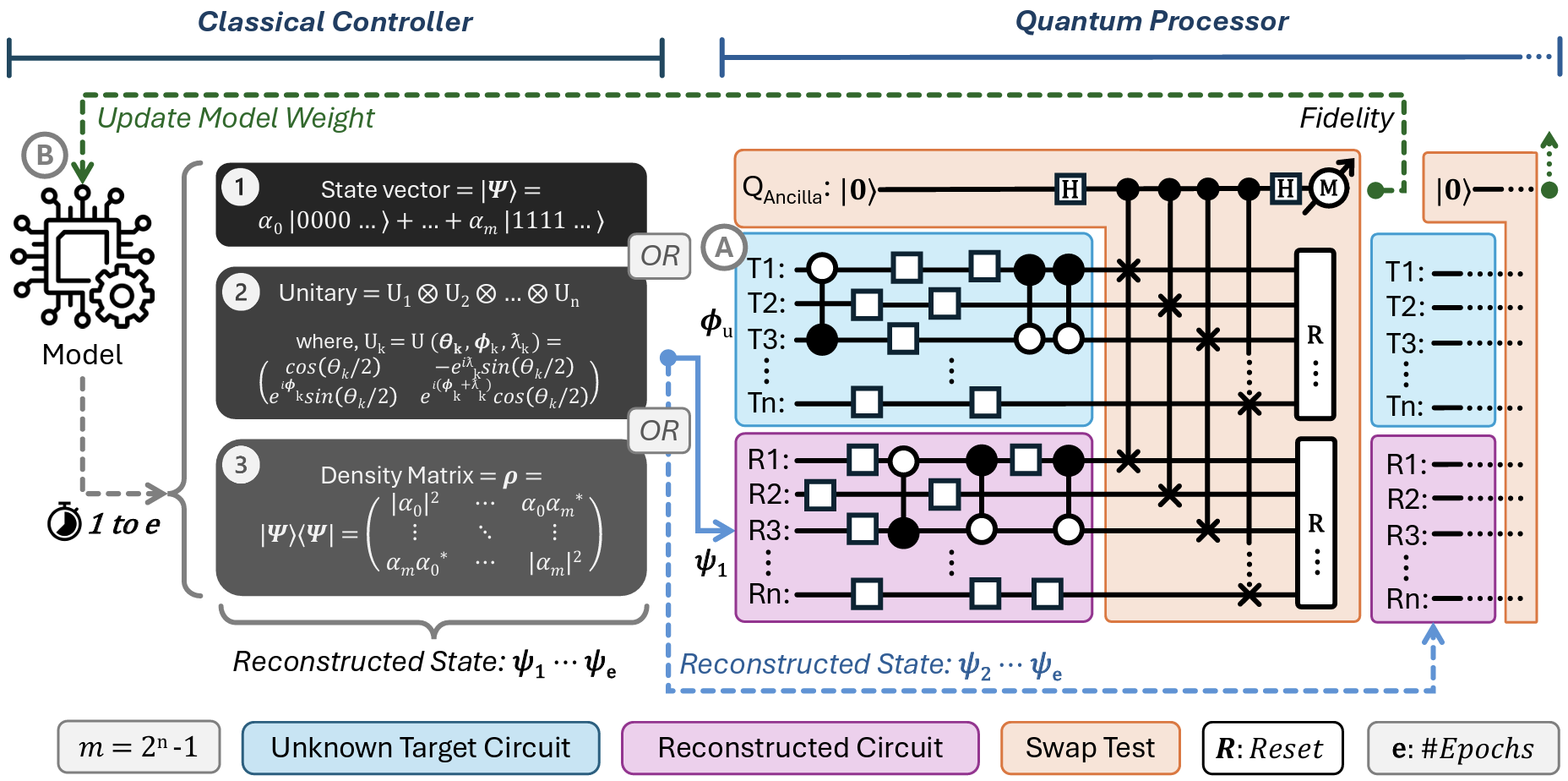 Guess, SWAP, Repeat : Capturing Quantum Snapshots in Classical Memory
Guess, SWAP, Repeat : Capturing Quantum Snapshots in Classical Memory Published in arXiv Preprint, 2025
We introduce a novel technique that enables observation of quantum states without direct measurement, preserving them for reuse. Our method allows multiple quantum states to be observed at different points within a single circuit, one at a time, and saved into classical memory without destruction. These saved states can be accessed on demand by downstream applications, introducing a dynamic and programmable notion of quantum memory that supports modular, non-destructive quantum workflows. We propose a hardware-agnostic, machine learning-driven framework to capture non-destructive estimates, or “snapshots,” of quantum states at arbitrary points within a circuit, enabling classical storage and later reconstruction, similar to memory operations in classical computing.
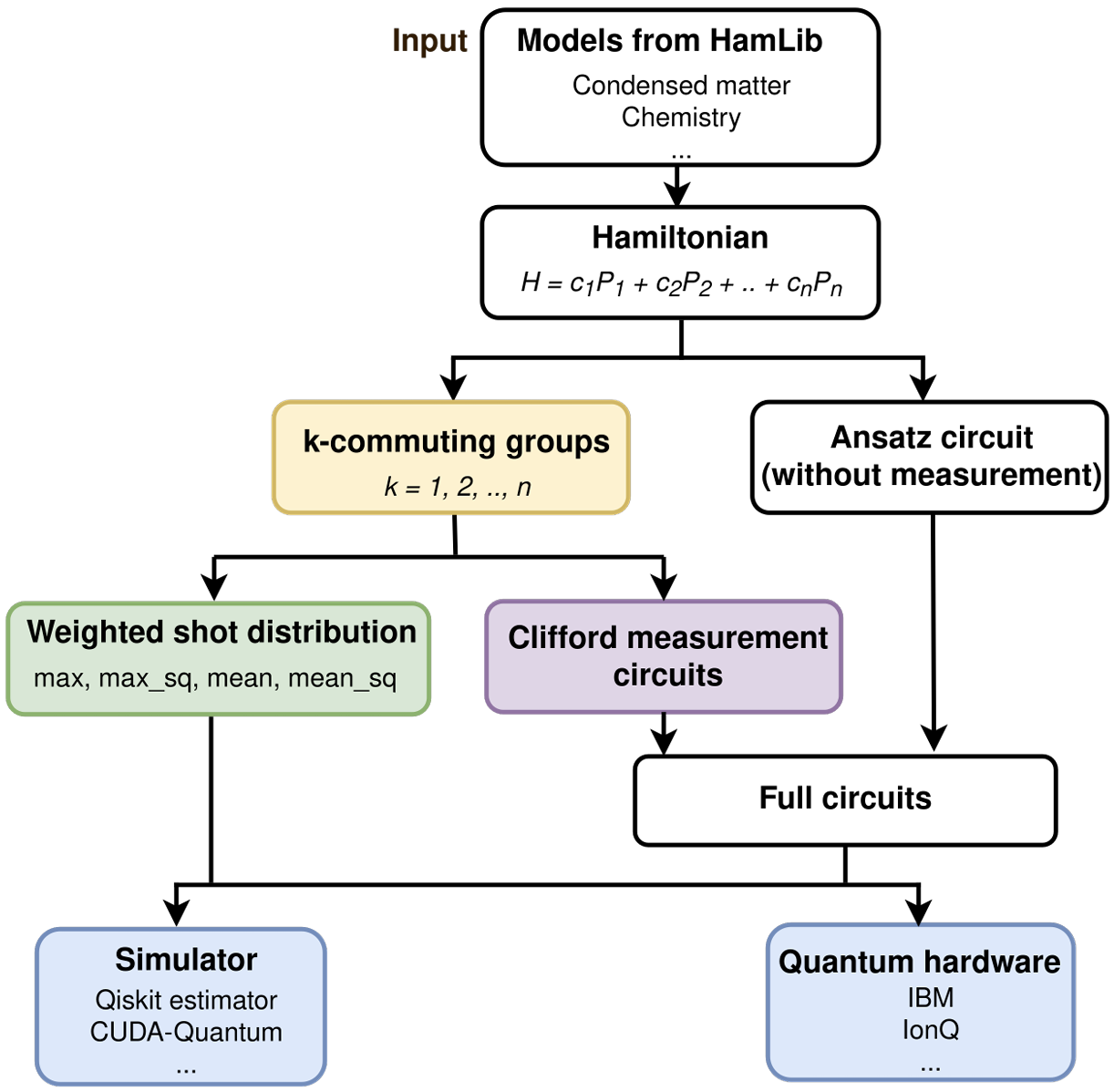 A Practical Framework for Assessing the Performance of Observable Estimation in Quantum Simulation
A Practical Framework for Assessing the Performance of Observable Estimation in Quantum Simulation Published in arXiv Preprint, 2025
Simulating dynamics of physical systems is a key application of quantum computing, with potential impact in fields such as condensed matter physics and quantum chemistry. However, current quantum algorithms for Hamiltonian simulation yield results that are inadequate for real use cases and suffer from lengthy execution times when implemented on near-term quantum hardware. In this work, we introduce a framework for evaluating the performance of quantum simulation algorithms, focusing on the computation of observables, such as energy expectation values. Our framework provides end-to-end demonstrations of algorithmic optimizations that utilize Pauli term groups based on k-commutativity, generate customized Clifford measurement circuits, and implement weighted shot distribution strategies across these groups.
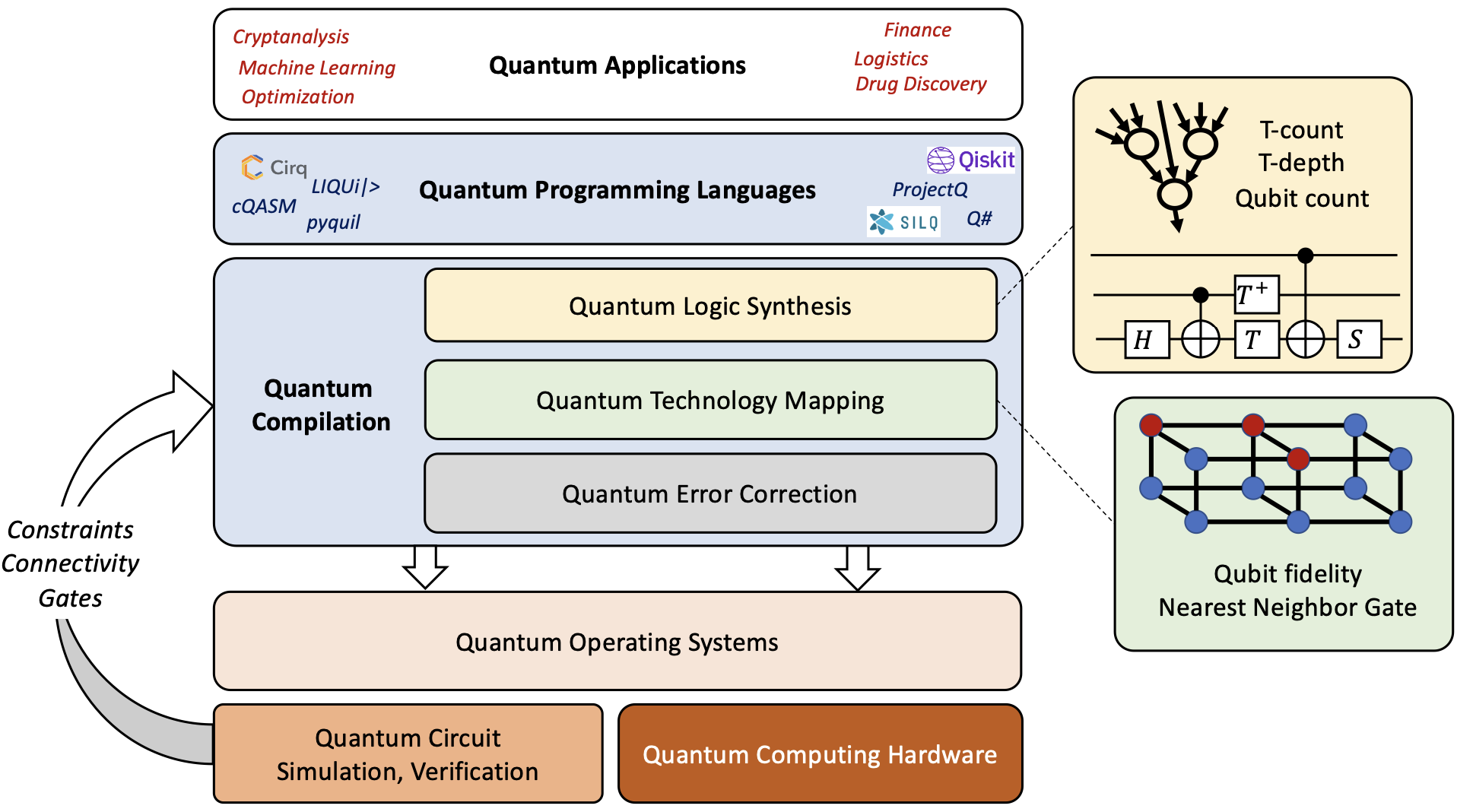 Software Flow for Quantum Computing
Software Flow for Quantum Computing Published in Springer Nature - Computational Technologies and Electronics. ICCTE 2023, 2025
Rapid evolution of quantum circuit technologies, matching with the emergence of promising quantum algorithms has catapulted quantum computers as the most important engineering quest of present times. A key ingredient of quantum engineering is to have an efficient, and scalable design automation flow. To that effect, various programming languages, corresponding compilation tool-chains, and technology-specific optimizations are being developed. In this paper, an overview of the various software flows for quantum computing is presented, including the core technical challenges, cross-flow compatibility issues, demonstrated results, and future research directions. A significant number of point-tools, as part of these various flows, are available as open-source tools. We refer to those tools as well as concerted efforts by industrial and academic research groups to develop a holistic software stack for quantum computing.
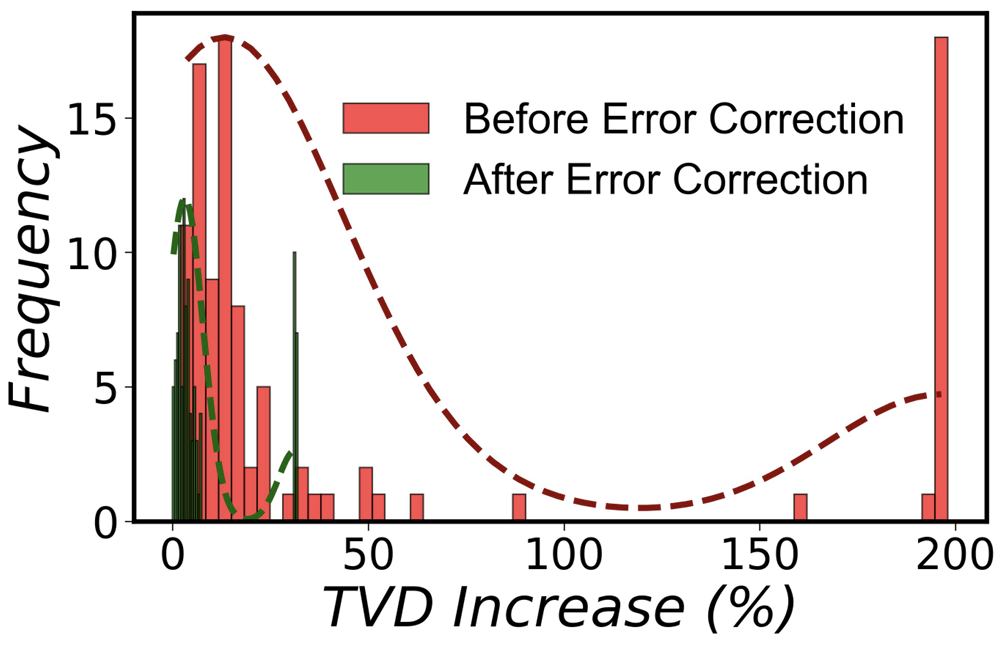 Investigating Impact of Bit-flip Errors in Control Electronics on Quantum Computation
Investigating Impact of Bit-flip Errors in Control Electronics on Quantum Computation Published in 2025 38th International Conference on VLSI Design and 2024 23rd International Conference on Embedded Systems (VLSID), 2025
In this paper, we investigate the impact of bit-flip errors in FPGA memories in control electronics on quantum computing systems. FPGA memories are integral in storing the amplitude and phase information pulse envelopes, which are essential for generating quantum gate pulses. However, these memories can incur faults due to physical and environmental stressors such as electromagnetic interference, power fluctuations, and temperature variations and adversarial fault injections, potentially leading to errors in quantum gate operations.
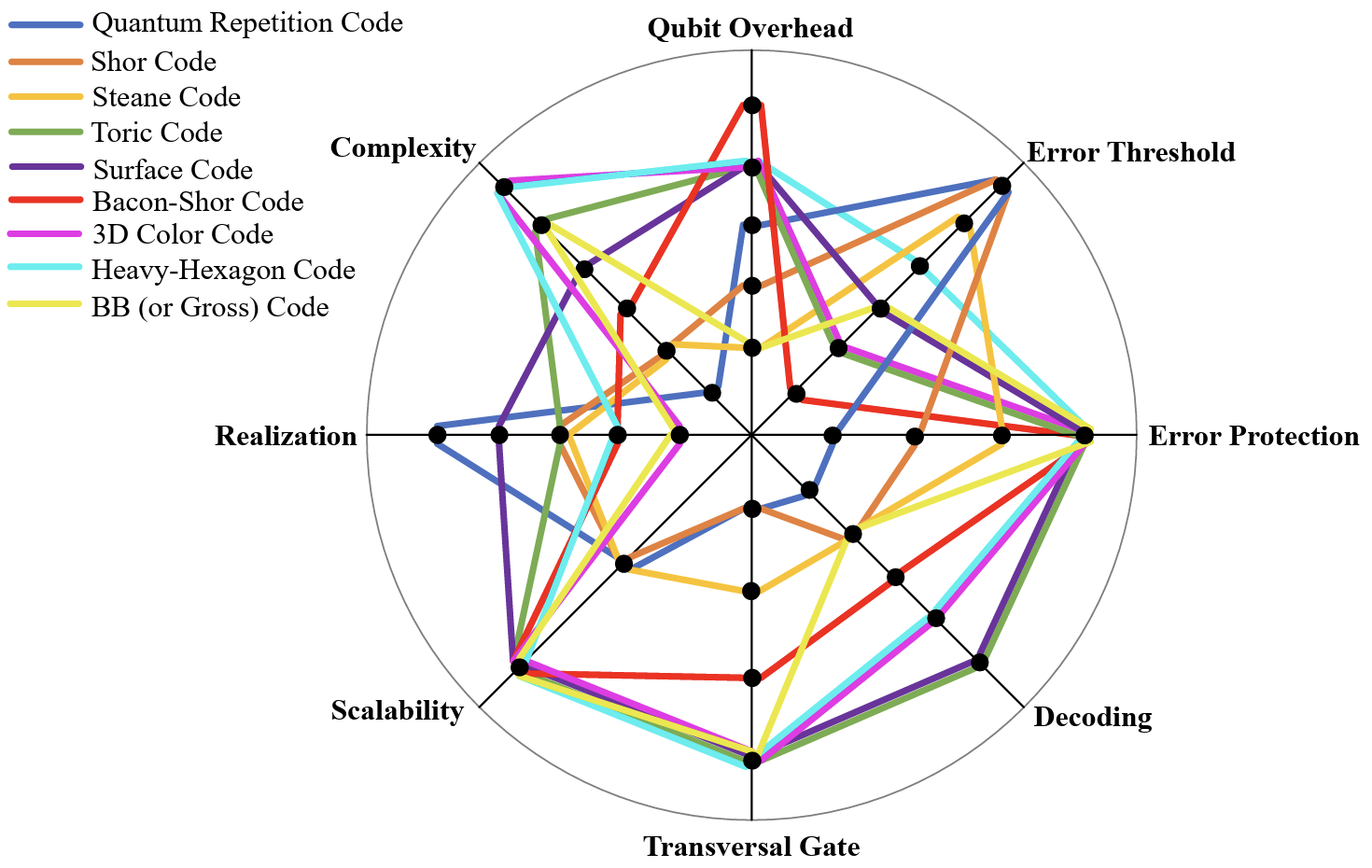 Magic Mirror on the Wall, How to Benchmark Quantum Error Correction Codes, Overall?
Magic Mirror on the Wall, How to Benchmark Quantum Error Correction Codes, Overall? Published in IEEE Quantum Week, 2024 IEEE International Conference on Quantum Computing and Engineering (QCE), 2025
Despite significant improvements in the field of QECCs, a unified methodology for evaluating them consistently has remained elusive. This paper addresses this gap by introducing a set of eight universal parameters and evaluating nine prominent QECCs for these parameters. We establish a universal benchmarking approach and highlight the complexity of quantum error correction, indicating that the choice of a QECC depends on each scenario unique requirements and limitations. Furthermore, we develop a systematic strategy for selecting QECCs that adapts to the specific requirements of a given scenario, facilitating a tailored approach to quantum error correction.
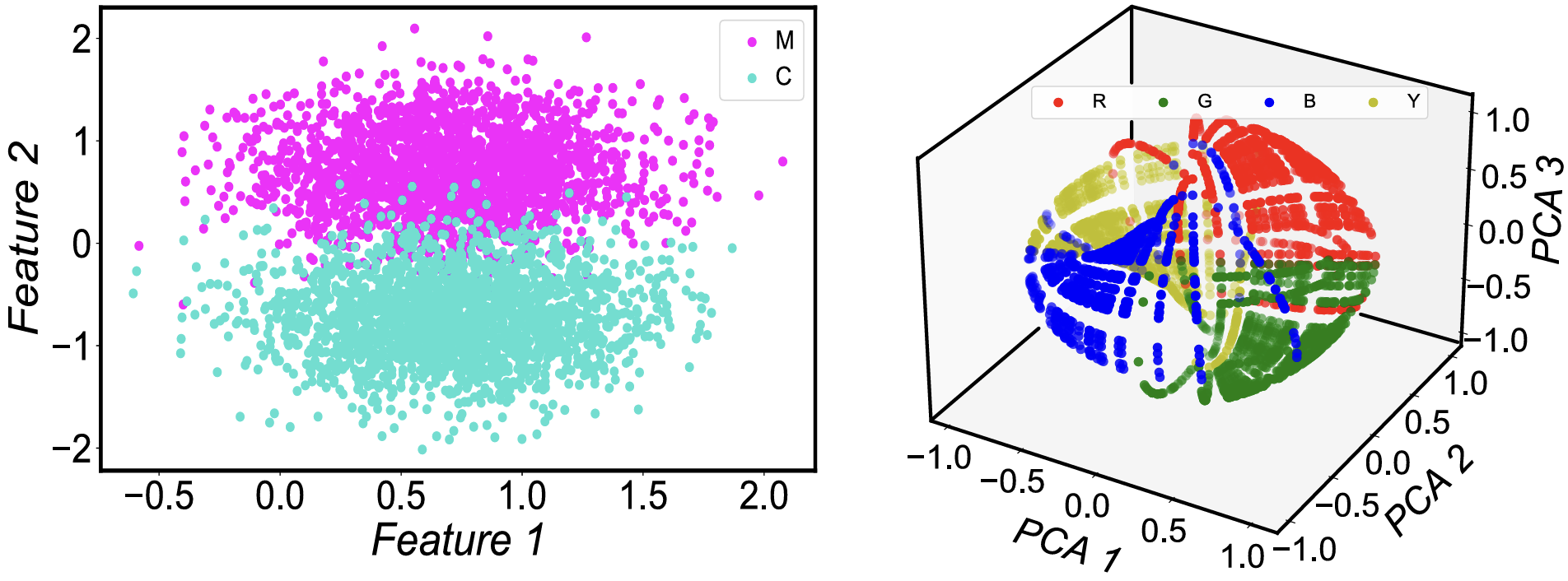 Q-Embroidery: A Study on Weaving Quantum Error Correction into the Fabric of Quantum Classifiers
Q-Embroidery: A Study on Weaving Quantum Error Correction into the Fabric of Quantum Classifiers Published in GLSVLSI 2024: Proceedings of the Great Lakes Symposium on VLSI 2024, 2024
This study makes a pioneering contribution by applying quantum error correction codes (QECCs) for complex, multi-qubit classification tasks. We implement 1-qubit and 2-qubit quantum classifiers with QECCs, specifically the Steane code, and the distance 3 & 5 surface codes to analyze 2-dimensional and 4-dimensional datasets. This research uniquely evaluates the performance of these QECCs in enhancing the robustness and accuracy of quantum classifiers against various physical errors, including bit-flip, phase-flip, and depolarizing errors.
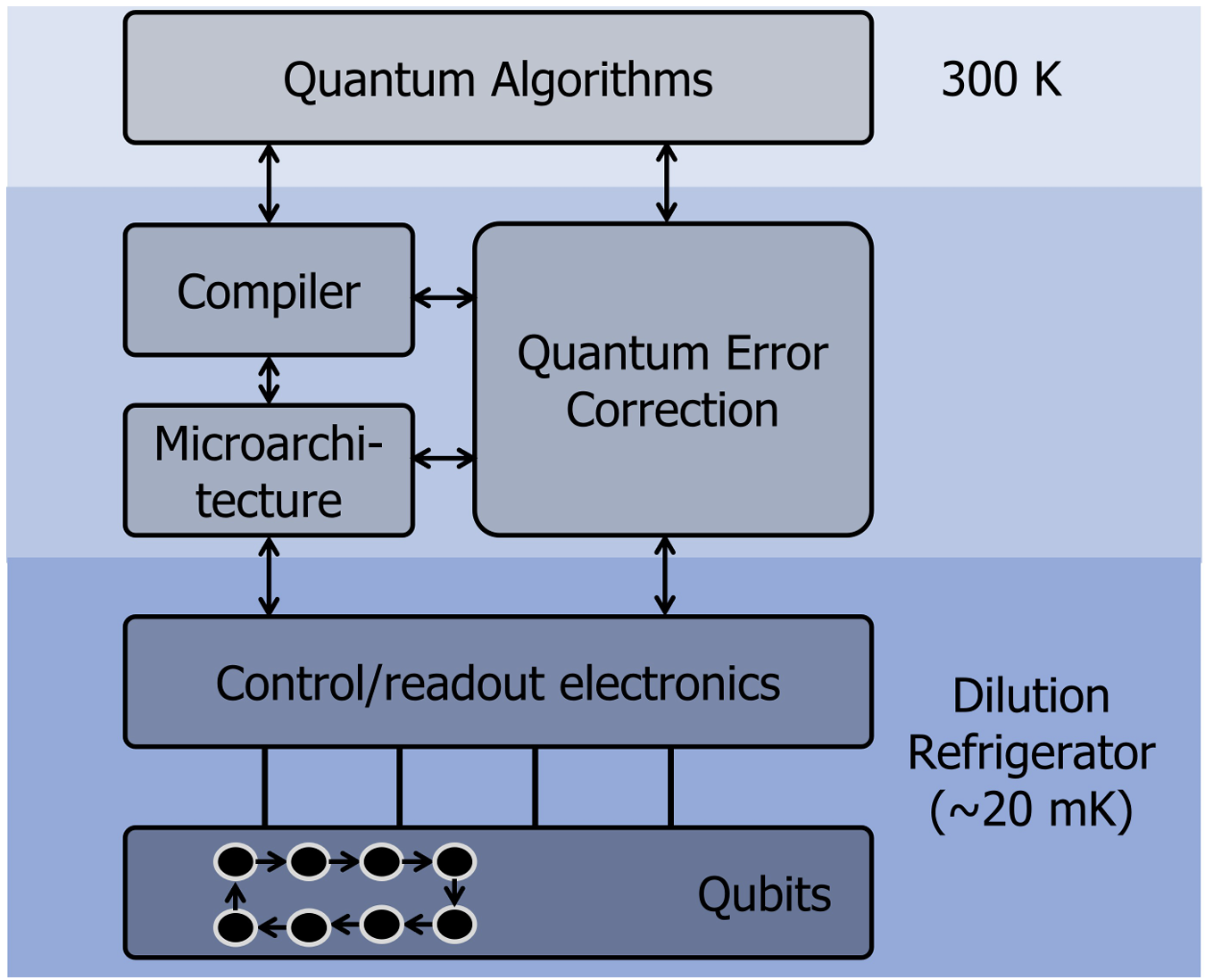 A First Order Survey of Quantum Supply Dynamics and Threat Landscapes
A First Order Survey of Quantum Supply Dynamics and Threat Landscapes Published in HASP 2023: Proceedings of the 12th International Workshop on Hardware and Architectural Support for Security and Privacy, 2023
This paper is a first attempt to explore the quantum computing ecosystem, from the fabrication of quantum processors to the development of specialized software tools and hardware components, from a security perspective. By investigating the publicly disclosed information from industry front runners like IBM, Google, Honeywell and more, we piece together various components of quantum computing supply chain. We also uncover some potential vulnerabilities and attack models and suggest defenses. We highlight the need to scrutinize the quantum computing supply chain further through the lens of security.
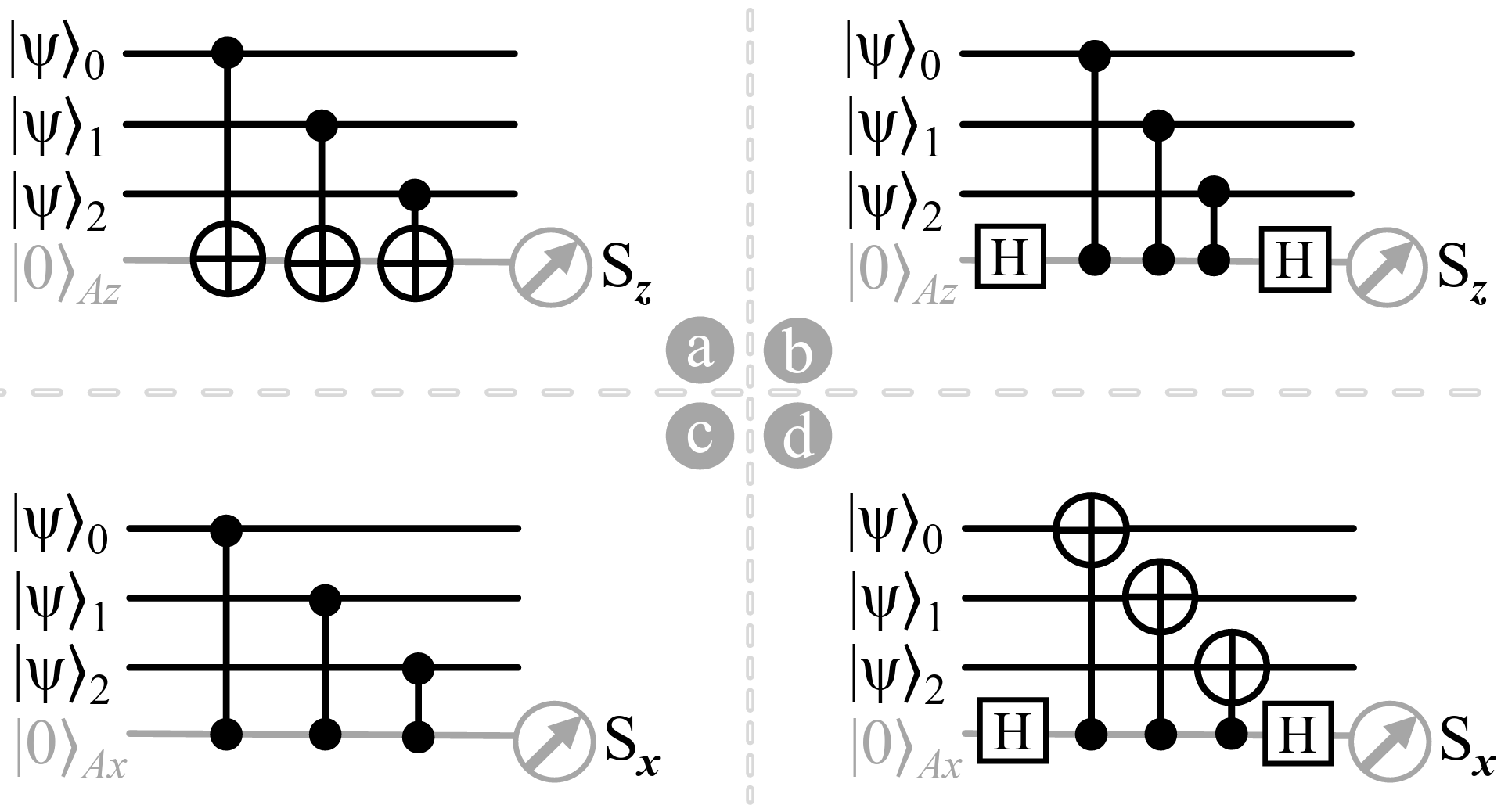 Quantum Error Correction for Dummies
Quantum Error Correction for Dummies Published in 2023 IEEE International Conference on Quantum Computing and Engineering (QCE), 2023
In this paper, we aim to provide a comprehensive review of the historical context, current state, and future prospects of Quantum Error Correction, tailored to cater to computer scientists with limited familiarity with quantum physics and its associated mathematical concepts.
Published in 2019 IEEE 10th Annual Ubiquitous Computing, Electronics & Mobile Communication Conference, 2020
This is the era of Big Data. We are surrounded by the technologies which targets and aim at processing huge amount of data around us. RAM size has been increased to accommodate and process these huge data for better performance. But there is a bottle neck of TLB tables which cannot accommodate the resulting large set of page table entries PTEs. But this problem could be solved by using the large page size with a smaller number of TLB entries. These are called superpages. This project aims at implementing the algorithm with which the management of these superpages done efficiently so that RAM are fully and efficiently used for modern Large data computing.
Published in https://ieeexplore.ieee.org/abstract/document/8614916, 2019
The proliferation of mobile computing and communication devices are driving a revolutionary change in our information society. Among all the applications and services run by mobile devices, network connections and corresponding data services are without doubt the most demanded services by mobile users. A MANET is a continuously self-configuring, infrastructure-less network of mobile devices connected without wires, which makes it ideal for the present scenario. But, due to lack of any centralized infrastructure and access to trusted authorities, the security in MANET poses a huge threat. The prominent routing protocols we know are generally designed for environments where the nodes within a network are non-malicious. Due to the vulnerable nature of the mobile ad hoc network, there are numerous security threats that disturb its development. We propose a routing protocol called Acceptability Based Clustering Routing Protocol (ABCP) for MANETs, which ensures secure routing through the network: by electing a Cluster head on the basis of Acceptability score, after which a node only communicates to that secure Admin node.
Published in 2018 IEEE 8th Annual Computing and Communication Workshop and Conference (CCWC), 2018
Mobile ad-hoc networks (MANET) are infrastructure-less networks in which groups of nodes collaborate by forwarding packets such that each node can function without a common access point. The mobile nature of MANETs result in degradation of battery life and efficient routing is, thus, necessary for reducing energy consumption. In this paper we modify the existing AODV protocol to decrease energy required during transmission by reduction of packet size and maintain an Energy/Distance ratio as a metric for tracing the best route. By combining these features we reduce required transmission power, as well as increase battery life.
Published in 2017 8th Annual Industrial Automation and Electromechanical Engineering Conference, 2017
The issue of environmental pollution and climate change has become an international concern due to their affects to the physical and biological entities of the environment. In this paper, the main objective is to find the pollutants in nature with the help of the Internet of Things (IoT).
Published in 2017 8th Annual Industrial Automation and Electromechanical Engineering Conference, 2017
The objective of this paper is how Internet and Sensors can help to develop a city to smart.
Published in The 6th IEEE International Conference and Workshop on Computing and Communication, 2015
Glycosylation is the process of adding carbohydrates to a protein residue. It is an important part of post-translational modification undergone by protein chains. Over 40 disorders have been linked to improper glycosylation bonds, over 80% of which affect the nervous system. Our aim is to study glycosylation in proteins and to understand the properties that affect this change. A detailed study using support vector machines has given us a computer that accurately predicts 79% percent of the possibility of positive glycan-bond. In this paper we attempt to discuss the entire study and our conclusions. We target to find out which of the physicochemical properties of amino acids are relevant for glycosylation.